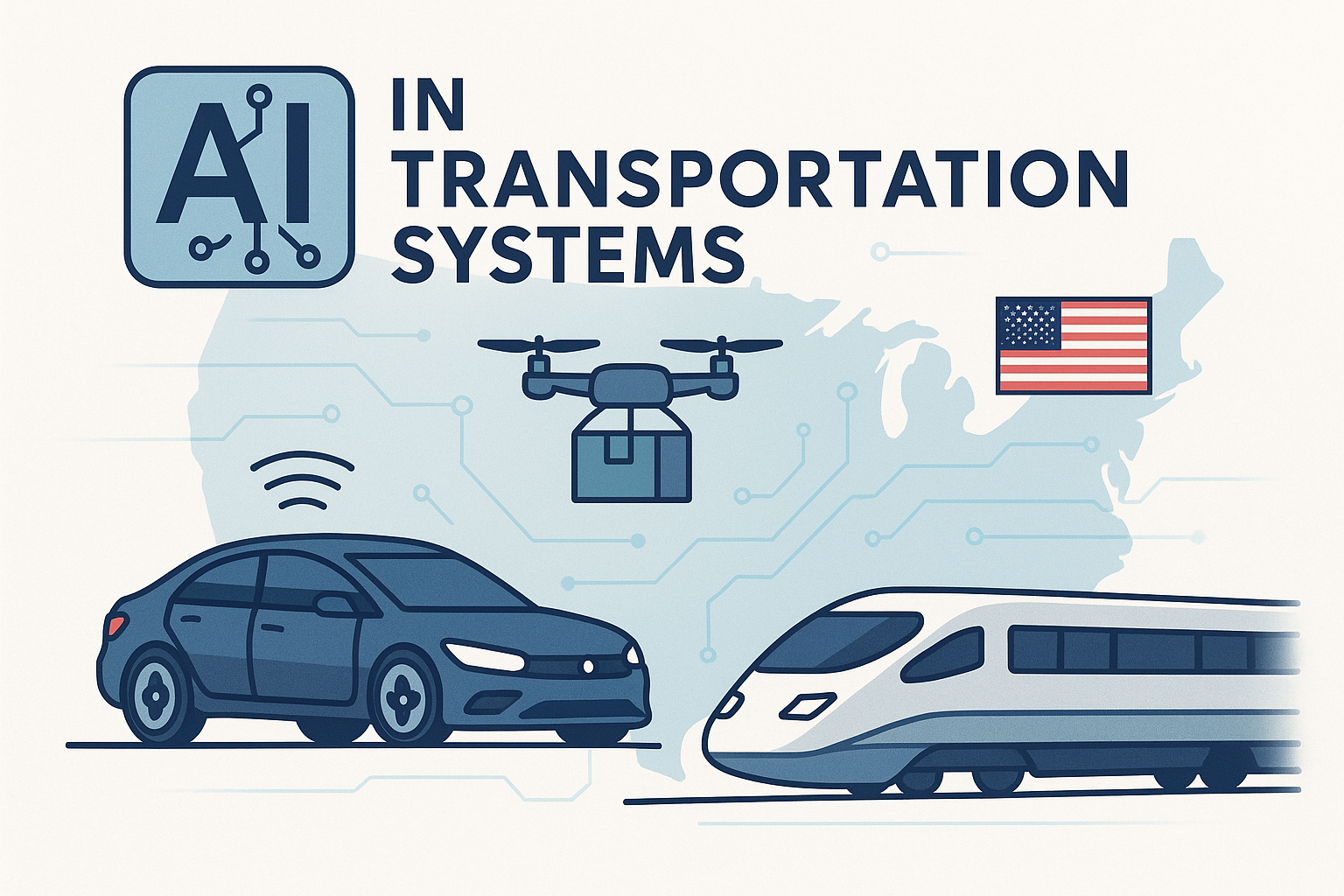
AI in Transportation Systems: Revolutionizing Mobility in 2025
Artificial Intelligence (AI) is transforming the landscape of transportation systems across the United States. From self-driving vehicles to intelligent traffic management, AI-driven innovations are making travel safer, more efficient, and environmentally friendly. In this comprehensive guide, we’ll explore how AI in transportation systems is shaping the future of mobility in 2025, highlight the top applications, and discuss the benefits and challenges facing this rapidly evolving sector.
Understanding AI in Transportation Systems
AI in transportation systems refers to the integration of machine learning, data analytics, and automation technologies to optimize the movement of people and goods. These intelligent systems analyze vast amounts of data in real time, enabling smarter decision-making and improved operational efficiency.
Key Components of AI in Transportation
- Machine Learning Algorithms: Power predictive analytics for traffic flow and vehicle maintenance.
- Computer Vision: Enables object detection for autonomous vehicles and surveillance.
- Natural Language Processing: Facilitates communication in customer service bots and navigation systems.
- Robotics and Automation: Streamlines logistics, warehousing, and delivery.
TIP: AI systems in transportation rely heavily on real-time data from IoT sensors, GPS, and connected infrastructure to make accurate decisions.
Top 10 Applications of AI in Transportation Systems (2025)
AI is making a significant impact across various transportation sectors. Here are the top 10 applications revolutionizing U.S. mobility:
- Autonomous Vehicles (Self-Driving Cars)
- Smart Traffic Management Systems
- Predictive Maintenance for Fleets
- AI-Powered Public Transit Optimization
- Intelligent Freight and Logistics
- AI-Driven Route Planning and Navigation
- Connected Vehicle-to-Everything (V2X) Communication
- Automated Toll Collection and Payment Systems
- AI-Based Safety and Collision Avoidance
- Demand-Responsive Ride-Sharing Services
Side-by-Side Comparison Table
| Rank | Application | Main Benefit | 2025 U.S. Adoption Level |
|---|---|---|---|
| 1 | Autonomous Vehicles | Enhanced safety, reduced labor | High |
| 2 | Smart Traffic Management | Reduced congestion | High |
| 3 | Predictive Maintenance | Lower downtime, cost savings | Medium-High |
| 4 | Public Transit Optimization | Improved reliability | Medium |
| 5 | Intelligent Freight & Logistics | Faster deliveries | High |
| 6 | AI Route Planning & Navigation | Efficient travel | High |
| 7 | Connected V2X Communication | Real-time data sharing | Medium |
| 8 | Automated Toll Collection | Seamless payments | High |
| 9 | AI Safety & Collision Avoidance | Fewer accidents | Medium-High |
| 10 | Demand-Responsive Ride-Sharing | Flexible mobility | High |
How AI is Transforming U.S. Transportation Systems
Autonomous Vehicles: The Future of Safe Travel
Self-driving cars and trucks, powered by AI, are already being tested and deployed in several U.S. cities. These vehicles use deep learning and computer vision to interpret their surroundings, make split-second decisions, and navigate complex traffic scenarios.
- 🏥 Safety: AI reduces human error, which is responsible for over 90% of road accidents.
- 📦 Efficiency: Autonomous trucks streamline long-haul logistics, reducing delivery times.
Smart Traffic Management: Reducing Congestion and Emissions
AI-driven traffic management systems analyze real-time data from cameras, sensors, and GPS devices to optimize traffic light timing, reroute vehicles, and predict congestion hotspots.
- ✅ Benefits: Smoother traffic flow, lower emissions, and improved emergency response times.
Predictive Maintenance: Keeping Fleets on the Road
AI algorithms monitor vehicle health, predict component failures, and schedule maintenance before breakdowns occur. This proactive approach minimizes downtime and extends vehicle lifespans.
TIP: Predictive maintenance can reduce fleet operating costs by up to 20% in 2025.
AI-Powered Public Transit: Smarter, More Reliable Service
AI optimizes bus and train schedules, predicts passenger demand, and provides real-time updates to commuters. This leads to more reliable and efficient public transportation systems.
Intelligent Freight and Logistics: Faster, Greener Deliveries
AI streamlines supply chain operations by optimizing routes, managing inventory, and automating warehouse tasks. This results in faster deliveries and reduced carbon footprints.
Benefits of AI in Transportation Systems
- Enhanced Safety: Fewer accidents and fatalities due to AI-driven decision-making.
- Operational Efficiency: Reduced travel times and costs for both passengers and freight.
- Environmental Sustainability: Lower emissions through optimized routing and reduced congestion.
- Improved Accessibility: AI-powered ride-sharing and public transit make transportation more inclusive.
- Data-Driven Insights: Real-time analytics enable better planning and resource allocation.
Challenges and Considerations for AI in Transportation
While AI offers transformative benefits, it also presents challenges:
- Data Privacy and Security: Protecting sensitive transportation data from cyber threats.
- Regulatory Hurdles: Navigating evolving federal and state regulations.
- Infrastructure Upgrades: Modernizing roads, signals, and communication networks.
- Public Acceptance: Building trust in autonomous and AI-driven systems.
- Workforce Impact: Addressing job displacement and reskilling needs.
TIP: Collaboration between government, industry, and communities is essential to address these challenges and maximize the benefits of AI in transportation.
Conclusion: The Future of AI in Transportation Systems
AI in transportation systems is revolutionizing how Americans move, work, and live. In 2025, the integration of AI technologies—from autonomous vehicles to intelligent traffic management—has already delivered significant improvements in safety, efficiency, and sustainability. As adoption continues to grow, the U.S. transportation sector is poised for even greater transformation, with smarter mobility solutions that benefit everyone.
To fully realize the potential of AI in transportation, stakeholders must address challenges related to data security, regulation, and public trust. By fostering innovation and collaboration, the U.S. can lead the world in building transportation systems that are not only intelligent but also safe, equitable, and resilient for the future.